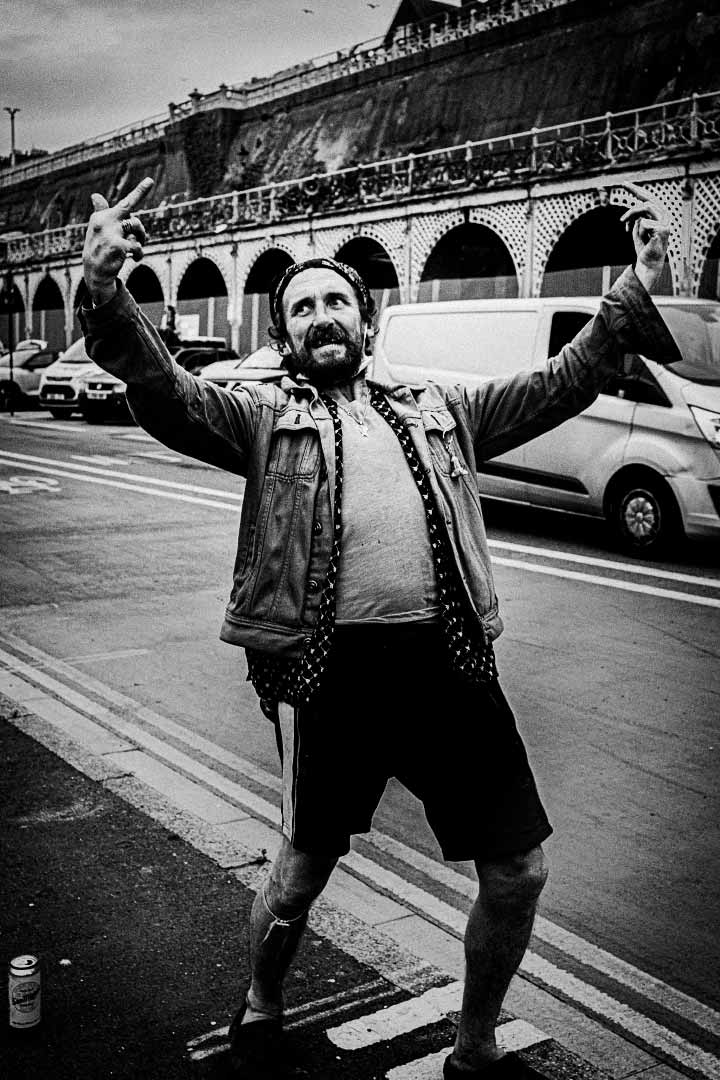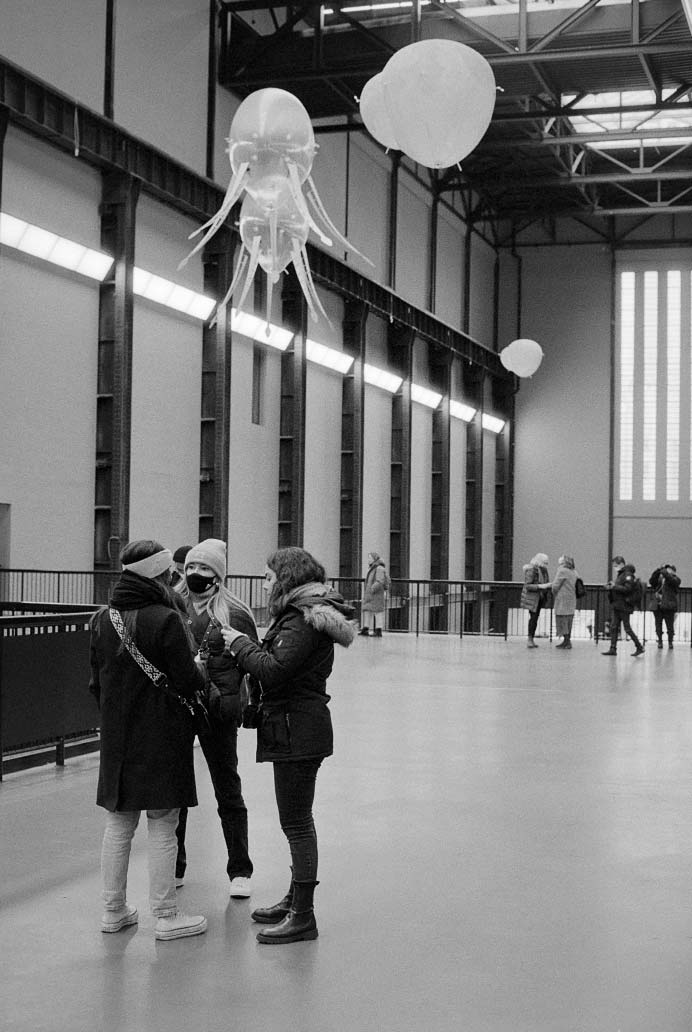What is Street Photography?
In this article I will outline the many facets of street photography and how I personally use them. Consider it an initial framework and I will expand many of the sections in future posts.
Summary
- In this post I will try to answer my posed question, “what is street photography?”. I will tell you about my techniques, composition styles, equipment and processing philosophy.
- I will explain why I use black and white imagery exclusively and my separation of street and urban photographs in my own work.
- I discuss UK law regarding photographing strangers and there is even a short section on how we process black and white and colour.
- This is an overview of the genre and I will go into much more detail about the specific subjects here in later posts.
If you prefer use the contents index to navigate to the sections that interest you most.
Street photography, what is it exactly?
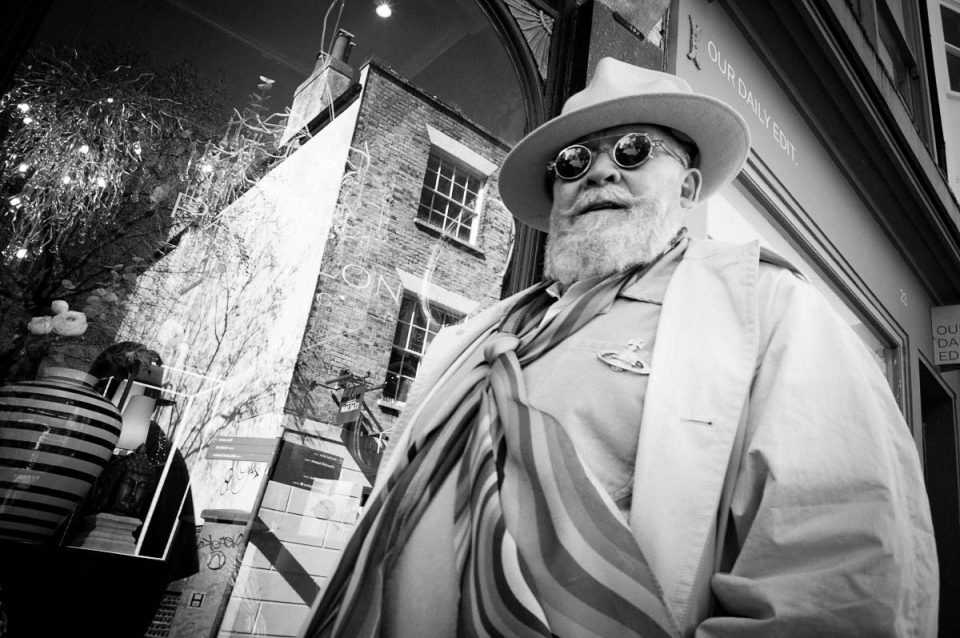
It is a genre that captures candid moments of life in public spaces. It goes beyond simply taking pictures on the street; it aims to document unscripted, authentic instances of daily life. Influenced by pioneers like Henri Cartier-Bresson and his “decisive moment” concept, street photographers strive to combine perfect timing with meaningful composition to create impactful images.
The Essence of Street Photography
Defining street photography
Street photography captures life that fills city streets. It’s all about the unexpected moments that happen in public spaces. Through my camera, I turn everyday scenes into momentary captures. As a street photographer, the goal is to create images that document the world and evoke emotions, or entertain through artistic interpretations.
The urban environment as a canvas
Garry Winogrand saw cityscapes as stages for untold narratives. Every corner of the city, from alleyways to parks, holds potential for storytelling. In my work, these settings become more than just backdrops. They’re essential to the stories I tell.
The urban environment provides a diverse setting for street photography, offering countless storytelling possibilities. Every part of the city has the potential to reveal unique narratives. I immerse myself in these urban landscapes to capture images that provide insights into the human condition.
Technical Considerations in Street Photography
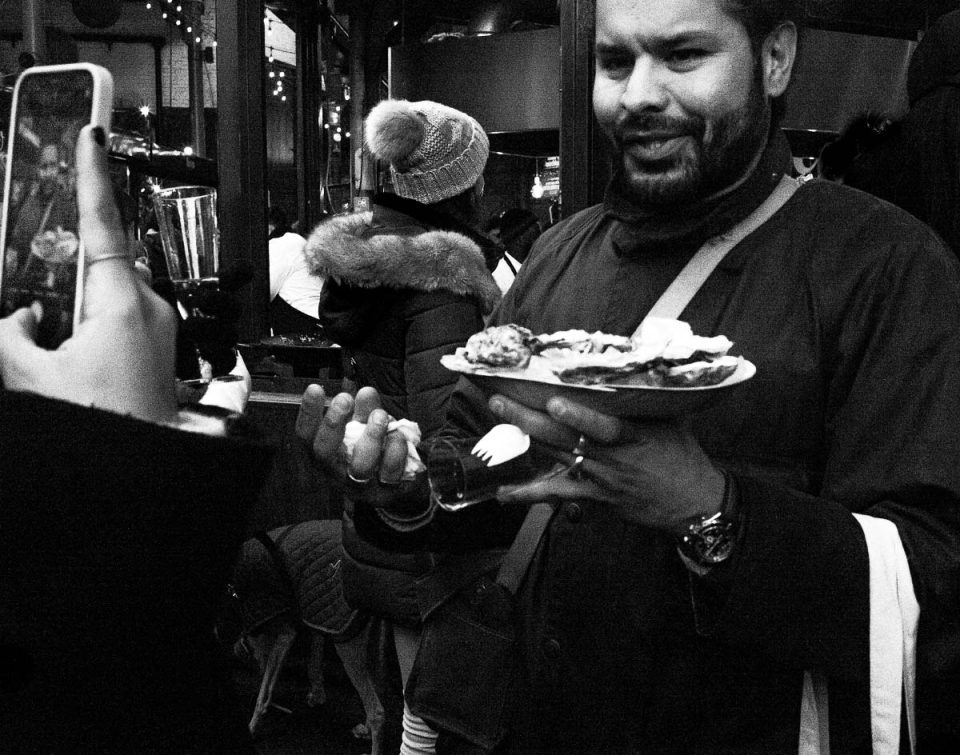
There is no right street photography camera in my opinion. It does however need to feel comfortable in my hand and to suit my needs and not be too obvious. I prefer using a small camera that won’t be noticed or scare people away. My choice is a Rangefinder, whether a digital or film camera variety.
Camera equipment and settings
In street photography projects, being able to frame your shot directly through your camera is crucial. I often select auto ISO to keep up with the changing light of the environment. I predominantly set my lens focus using Hyperfocal or Zone focusing philosophies.
Aperture and depth of field
Experimenting with aperture is essential; it shapes the depth of field and sets the tone of the picture. A large aperture blurs the background, making street portraits pop. Conversely a smaller aperture produces a greater depth of field, handy if you are using the Zone focusing method.
Shutter speed
Dealing with the busy streets and capturing a still image will necessitate a relatively fast shutter speed to capture an instant clearly. However you may prefer a slower speed which adds a blur that shows motion. I personally use a wide range of shutter speeds.
Focal length
I see focal length as a crucial tool for a particular composition. Usually, a 28mm or 35mm fixed focal length suits my needs for capturing street scenes and a 50mm for detail or abstraction. Whatever the choice they encourage me to position myself appropriately depending on the composition.
Zone focusing
Zone focusing is a technique used in photography to preset the focus of a lens to a specific distance range, ensuring that subjects within that range will be in focus. This technique is particularly useful in situations where quick focusing is necessary, such as street or action photography.
Hyperfocal distance
Using hyperfocal distance ensures clarity across the scene. This method keeps everything from a certain point onwards in sharp focus. When a lens is focused at the hyperfocal distance, the depth of field extends from half that distance to infinity.
Using available lighting
Light can play a major role in any street scene. Working with natural light means being alert and flexible. I use reflections or shadows to shape the light. My camera settings have to be considered to adapt to the conditions available at the time or create an abstract result.
Camera settings
My settings vary greatly depending on the subject matter and the ambient conditions. Do not be afraid to use semi or fully automated selections, there is no right or wrong argument, whatever you choose.
Candid vs posed
I tend to prefer candid captures, It suits my approach (and sensibility) and a quickly captured, unposed photo can speak volumes. Some street photographers however like to engage with their subjects, often inviting them to pose, and produce equally excellent photographs. It is what suits you best.
The ‘perfect’ equipment or setup!
Many influencers will try to tell you there is only one perfect camera, lens or setup for street photography. My response: “it’s only perfect if it suits your needs”.
Expression and Experimentation in Street Photographs
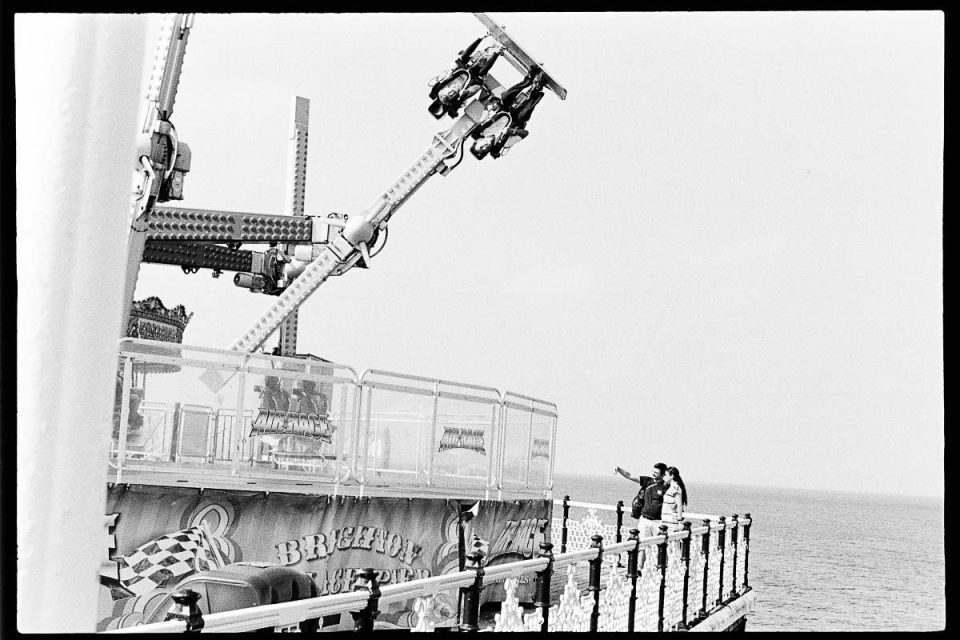
Street photography lets me express myself and innovate. It’s all about the play of light and shadow, catching genuine moments, and the surprises observed in public spaces. These elements help tell stories. The best photos come from mixing intuition, skill, and trying new things.
Here are some suggestions to help develop your street skills.
Creative Composition
Experimenting with unusual angles, tilted horizons, extreme close-ups, or abstract framing can lead to unique compositions that deviate from traditional photography norms.
Subject Matter
A compelling subject turns a photo from a simple document into a story-filled piece. It might be a brief connection with someone or a prolonged engagement. Always experiment.
Emotional Connection
Good candid street photography creates a potential connection with the viewer. Images that evoke feelings or tell a story can be memorable.
Composition and Framing
Careful composition and framing guide the viewer and they are usually considered and often achieved in my photography.
Timing and Decisive Moments
The ability to anticipate and capture fleeting, decisive moments is a staple of street photography. Photographers may use their intuition, patience, and quick reflexes to seize candid moments.
Motion Blur
Intentionally using slow shutter speeds to create motion blur can add a sense of movement and dynamism to street scenes. This technique can be especially effective when capturing individuals, crowds, or other moving subjects, or objects.
Multiple Exposures
Combining multiple exposures in-camera or in post-processing can create surreal, layered images that blend different moments or scenes into a single photograph.
Reflections and Shadows
Incorporating reflections from windows, puddles, or other surfaces can add depth and intrigue to street photos. Similarly, playing with shadows and silhouettes can create striking, graphic compositions.
Colour and Light
Experimenting with bold colour, high contrast, or unusual lighting conditions (e.g., neon lights or harsh midday sun) can lead to visually arresting images that challenge traditional notions of what makes a “good” photograph. Avoid traditionalism.
Street Portraits
While street photography often focuses on candid moments, some photographers experiment with approaching strangers for impromptu portraits or brief interactions, blurring the line between street and portrait photography.
Storytelling
Experimenting with narrative techniques, such as capturing a series of related images or creating diptychs or triptychs, can help tell a more complete story about a place, person, or moment. Even a slideshow in social media. Sometimes one image is enough to give narration.
Post-processing
Try various post-processing techniques, such as extreme contrast adjustments, unconventional colour grading, or adding grain or textures, can create a distinct aesthetic that sets a photographer’s work apart. Do not be frightened to crop or flip your images either.
Urban photography: why I differentiate
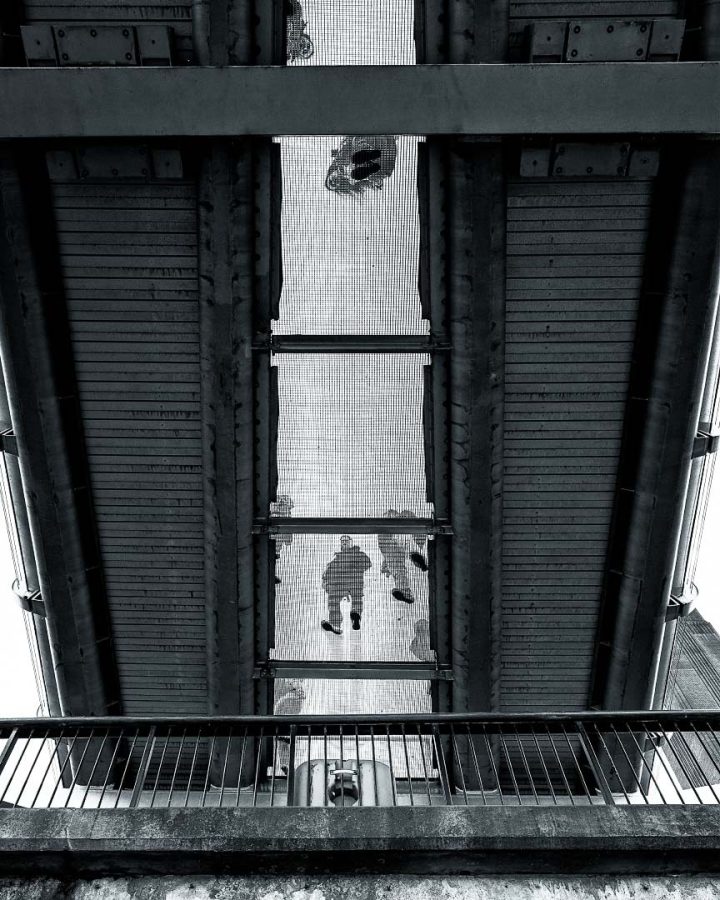
Ask a hundred photographers if urban photography is different from street and you will receive a 100 different answers from ‘it’s the same thing’ to ‘urban is structure, architecture or detail, very different to people’.
For me there is a distinction.
What is urban photography?
Urban photography is a genre that focuses on capturing the essence, diversity, and complexity of cities and urban environments. It encompasses a wide range of subjects, including architecture, cityscapes, street scenes, urban decay, and the people who interact with these spaces.
Urban vs Street
- Street focuses on candid, spontaneous moments of human interaction, while Urban encompasses a broader range of subjects.
- Street captures snapshots of everyday life, whereas Urban often involves a more deliberate, planned approach to composition.
- You will see these differences depicted in my People and Place Portfolios
Abstractionism in the city environment
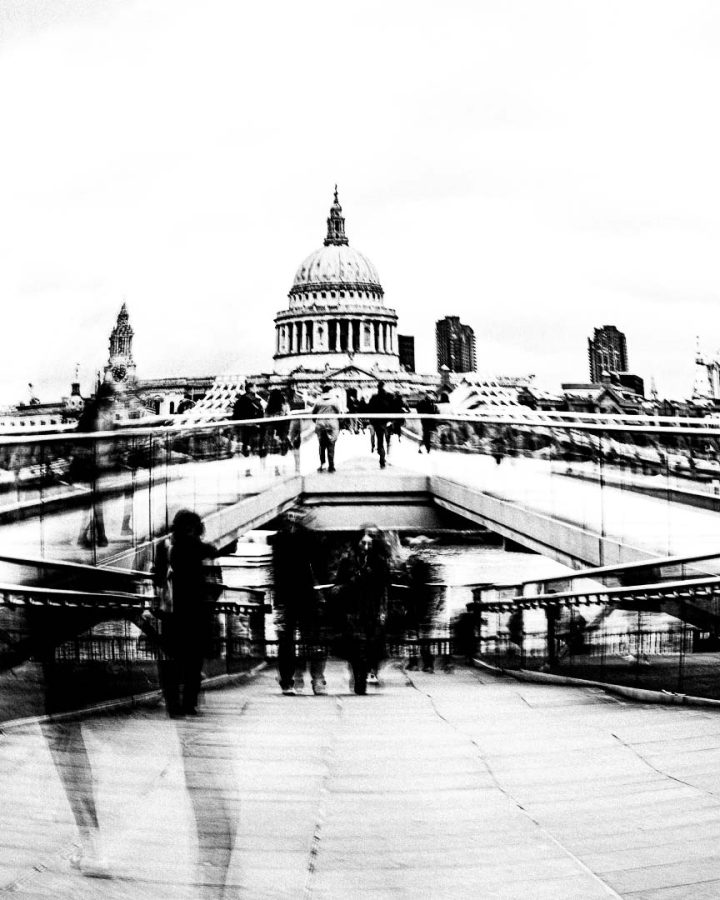
I love Abstractionism in art, I enjoy using abstraction techniques in my camera and digital darkroom and I make Abstract images, some from street scenes.
What exactly is Abstractionism?
Abstractionism is a style that prioritises capturing the essence, mood, or feeling of a subject rather than creating a literal representation.
My abstract photographs are non-representational, emphasising elements such as motion, form, line, texture, and pattern.
Street & urban abstraction
I often experiment with techniques such as intentional camera movement, selective focus, unusual angles, multiple exposures, or post-processing manipulation. These processes can be perfectly adapted for both street and urban environments as you can see in my portfolios.
The Role of Black and White in Street Photography
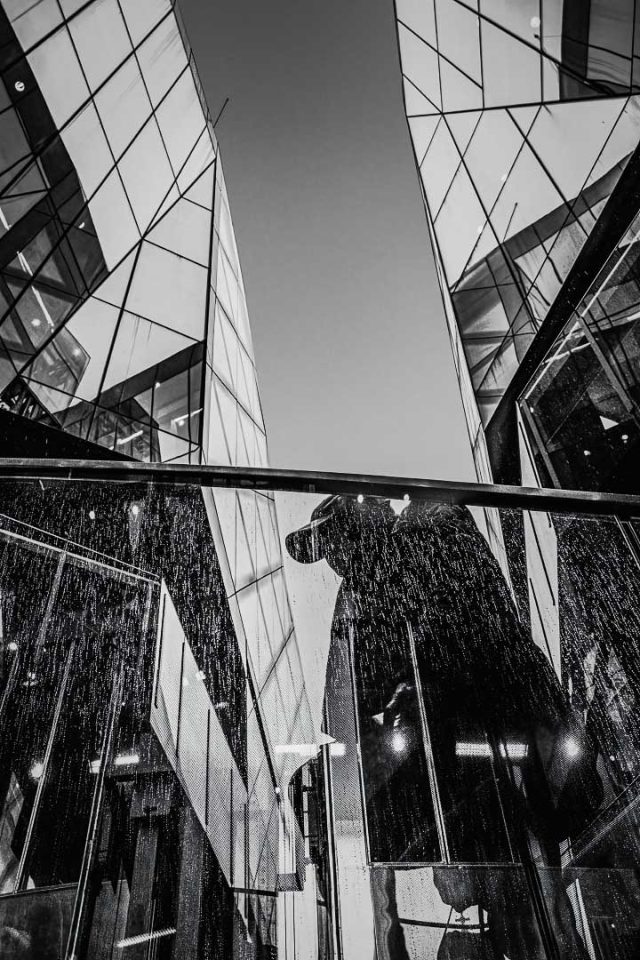
Black and white images have a significant impact on my street photography, offering a unique way to present the world and convey emotions. Here are some ways black and white photography influences the genre specifically
Timelessness
Black and white images often evoke a sense of timelessness, as they strip away the distractions and focus on the essence of the scene. This can give street photographs a classic and enduring quality.
Mood and Emotion
The absence of colour can heighten the impact of a photograph, as viewers are drawn to the interplay of light, shadow, and contrast. Black and white images can convey a wide range of moods, from the gritty and raw to the poetic and nostalgic.
Emphasis on Composition:
Without the distraction of colour, black and white images place a greater emphasis on composition, form, and geometry. I rely on elements such as lines, shapes, and patterns to create strong, visually compelling images.
Texture and Detail:
Black and white photography can enhance the perception of texture and detail in a scene, as the tonal range from black to white can reveal subtle gradations and nuances that may be lost in colour images.
Removing Colour Distractions
In some cases, colour can be a distraction from the main subject or message of a photograph. By removing colour, black and white images can help focus the viewer’s attention on the key elements of the scene.
Emphasising Light and Shadow
Black and white photography is particularly effective at emphasising the interplay of light and shadow, which can be used to create dramatic, moody, or mysterious effects. I can use harsh contrasts or subtle tonal gradations to guide the viewer’s eye or create a sense of depth.
Aesthetic Cohesion
Black and white images can help create a cohesive body of work, as the absence of colour unifies images taken in different locations or under different lighting conditions. This can be particularly useful when I want to create a consistent, recognizable style.
Historical Connection
Many of the most iconic street photographs throughout history were captured in black and white. We can pay homage to this rich tradition and create images that feel connected to the genre’s roots.
Encouraging Viewer Interpretation
The absence of colour in black and white images can encourage viewers to engage more actively with my photograph, as they must use their imagination to fill in the missing information. This can lead to more personal, subjective interpretations of my work.
How humans process black and white
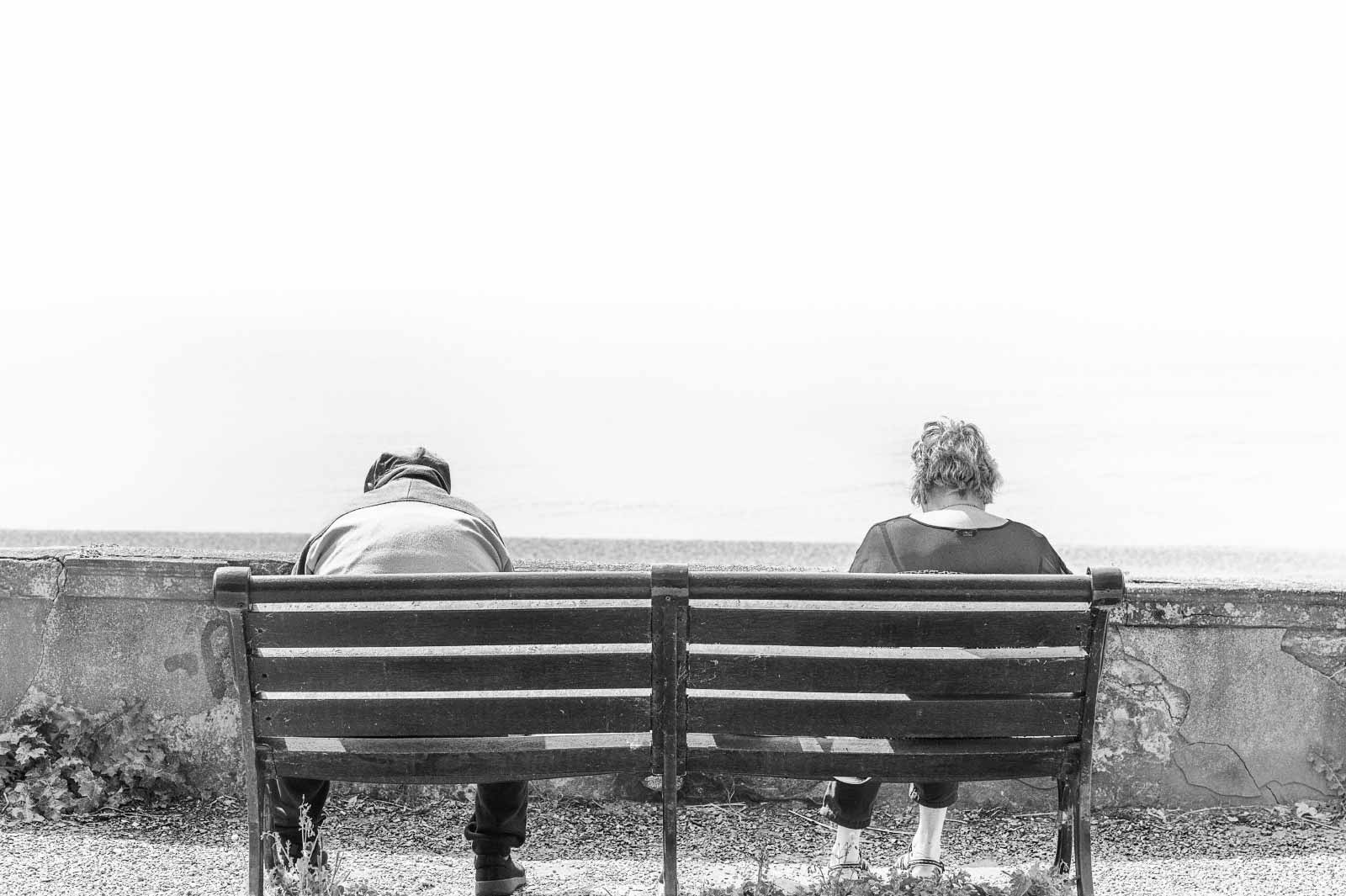
Humans process black and white images differently than colour, both in terms of visual perception and psychological impact. Here’s a brief look at how the human brain and visual system handle black and white information.
- Rod and Cone Cells: Rods are more sensitive to light and are responsible for low-light and peripheral vision, while cones are responsible for colour perception and detail.
- Luminance Processing: When viewing black and white images, the human visual system primarily processes the brightness or intensity of light, and thus interpret form, depth, and texture.
- Edge Detection: The human visual system is particularly adept at detecting edges and contours. The contrast between light and dark a helps the brain define those boundaries.
- Pattern Recognition: The human brain is highly efficient at recognizing and interpreting patterns, textures, and repetitive elements in a scene.
- Imagination and Interpretation: The lack of colour can engage the viewer’s imagination, using their own experiences and associations to interpret the image.
- Contextual Influences: The impact of black and white images can be influenced by cultural, historical, and personal contexts.
The law: street photography conundrum
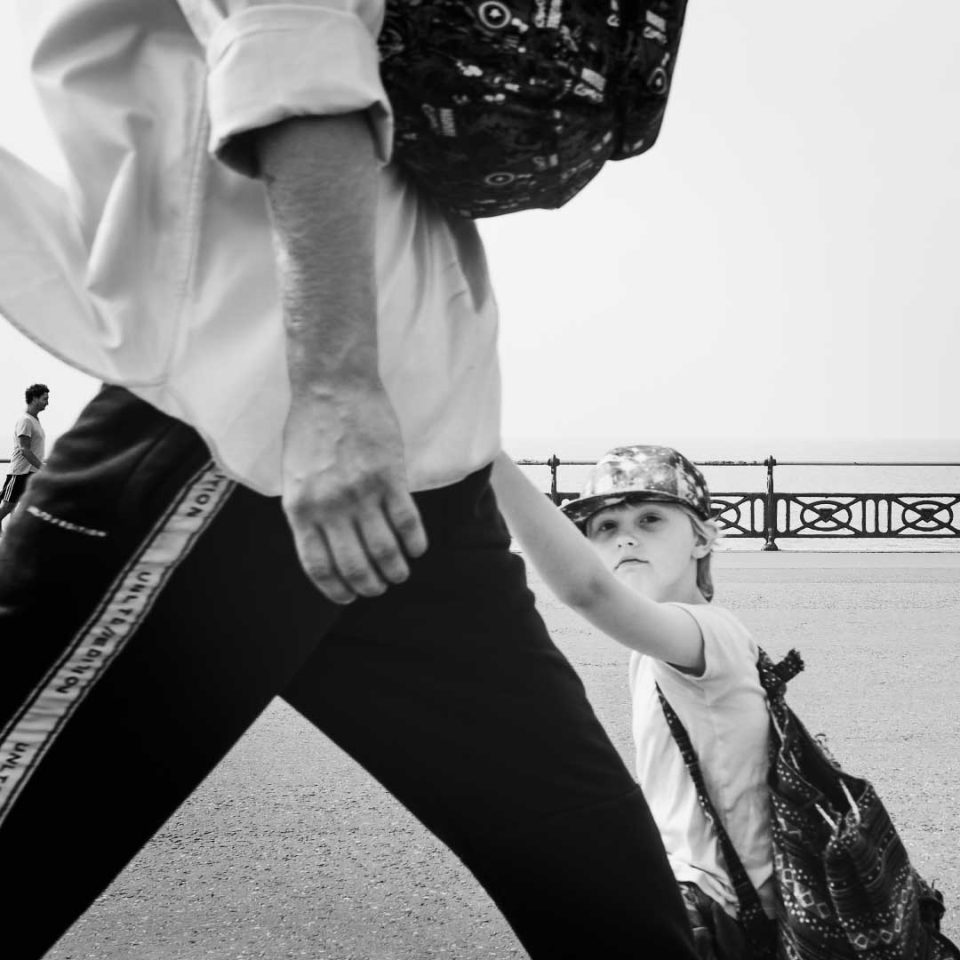
The following few paragraphs are specific to the United Kingdom. Please check with the local legislation when you are photographing elsewhere in the world.
David, author
I am not a lawyer but I have read documents and spoken to the authorities about taking photographs of adults, and children, in the UK. it is lawful, with a few caveats.
It is important to stress there is no differentiation, lawfully, between adults and children in respect of the rights of refusal. The subject(s) do not the right to demand sight of your camera’s image or removal. Occasionally I offer to delete an image to avoid conflict.
Those caveats: You must not take inappropriate or revealing photographs. You must not hinder people’s right of way. You must not take pictures of trademarked signs or insignia.
It is important to realise these rights to photograph others only apply on public land. Every police force in the UK has a statement about photography. I helped get my local force to publish their advice here.
Street photography: art or documentary?
I believe Street Photography can be considered both an art form and a method of documenting.
Street Photography as Art:
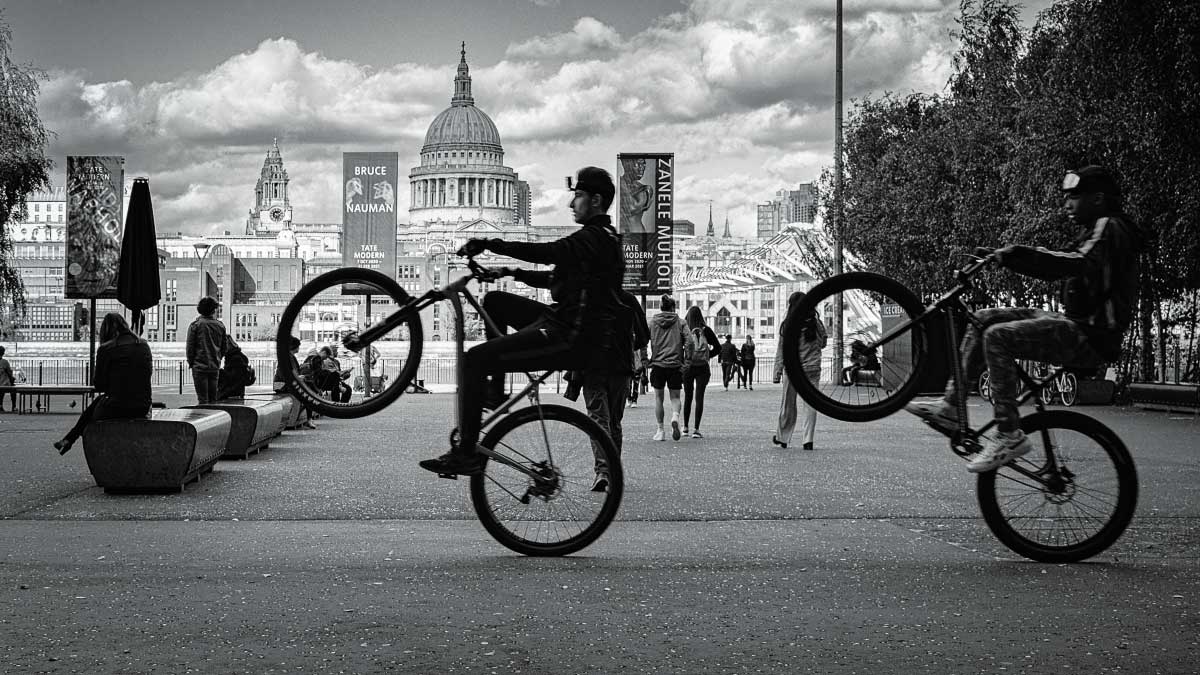
Creative Expression
I often use my vision and style to create aesthetically compelling images that convey emotions, ideas, or personal perspectives. This artistic approach emphasises my creative choices in composition, lighting, and moment selection etc.
Visual Aesthetics
Artistic street photographs may prioritise visual elements such as form, geometry, texture, and contrast to create images that are visually striking and evocative, even if the subject matter is mundane or everyday.
Interpretive and Subjective
Art-focused street photography allows for a greater degree of interpretation and subjectivity, as viewers are encouraged to bring their own experiences and emotions to the reading of the image.
Emotional Impact
I may seek to create images that evoke strong emotional responses in my viewers, using techniques such as juxtaposition, symbolism, or narrative.
Street Photography as Documentary:
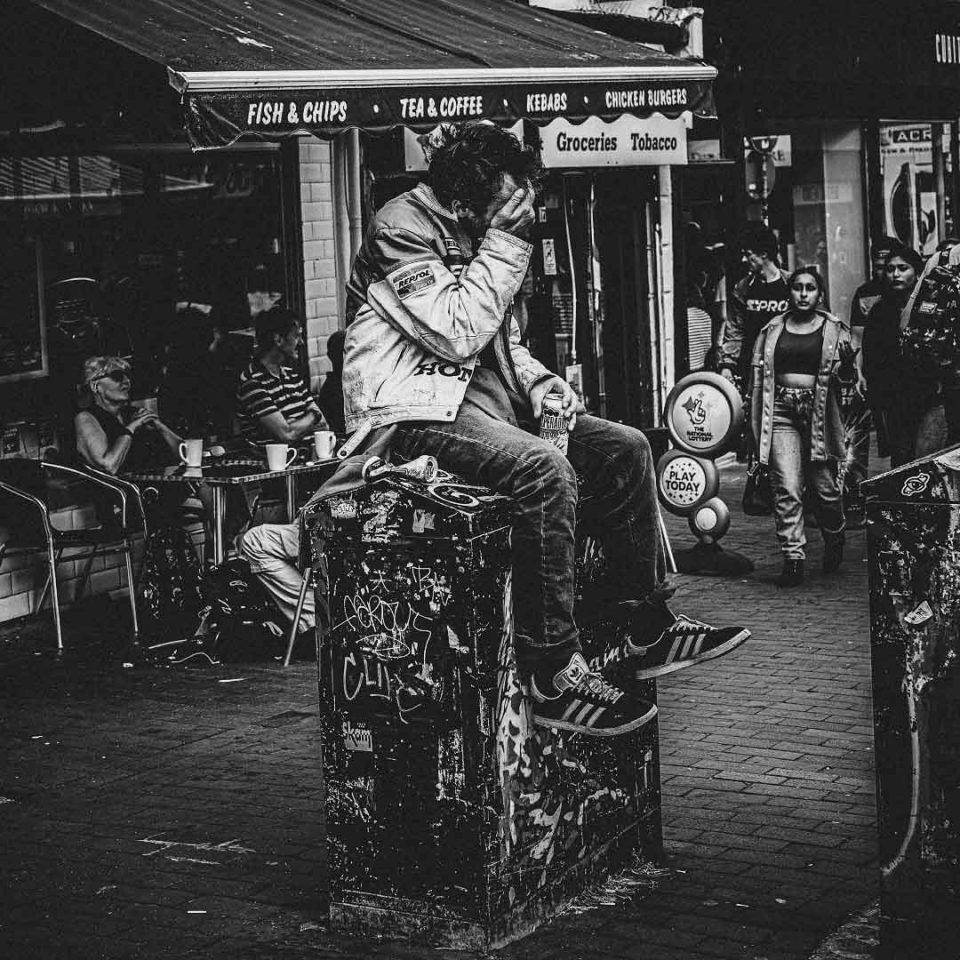
Recording Reality
Documentary street photography aims to capture candid, unposed moments that reflect the reality of everyday life in public spaces. The focus is on creating an authentic, unbiased historic record of people, places, and events.
Social and Historical Context
Documentary street photographers often seek to capture images that provide insight into specific social, cultural, or historical contexts. Their work may serve as a visual record of a particular time, place, or community.
Objective and Truthful
The documentary approach to street photography emphasises the importance of presenting reality as accurately and objectively as possible, with minimal manipulation or staging.
Storytelling and Narrative
- Documentary street photographers may use their images to tell stories about the people and places they encounter. The goal is to create a coherent body of work that communicates their specific message or theme.
- In practice, I try to combine elements of both art and documentary in my work, creating images that are both visually compelling and socially or historically relevant. The balance between the two approaches may vary depending on my intent, style, and subject matter.
- Ultimately, whether street photography is considered art or documentary is largely subjective and a matter of perspective or context.
FAQ:
Q: How can I improve my street photography skills?
A: To enhance your street photography, practice regularly, study the work of other street photographers, seek different subjects, and familiarise yourself with the technical aspects of your equipment and try different composition styles.
Q: What equipment do I need for street photography?
A: The best camera for street photography is the one you have to hand. I prefer a small and discreet camera with a prime lens to capture authentic moments without drawing too much attention. Use your mobile phone if you don’t have a traditional camera.
Q: Are there specific tips for shooting street photography?
A: In my opinion, Yes. Some street photography tips include shooting in different lighting conditions, using specific equipment for a particular result, and being patient to capture the ‘decisive moment’.
Q: Do I need permission to photograph people in the street?
A: In most cases (in the UK), you don’t need a model release for street photography as it falls under the category of public photography. However, it’s always respectful to ask for permission if you plan to make a portrait of a specific individual.
Q: What makes street photography unique compared to other forms of photography?
A: Street photography is characterised by capturing unposed moments of everyday life in public spaces, often focusing on the human element and the interaction between people and their environment.
Q: Can I practise street photography with any camera?
A: Absolutely! Street photography can be done with any camera, whether it’s a DSLR, mirrorless camera, smartphone, or even a film camera (once the only choice available). The key is to focus on capturing moments and telling a story through your images.
I hope you have enjoyed reading my article and I look forward in expanding on the various subjects in coming posts. Please contact me if you have any feedback or questions.
Thanks, David




